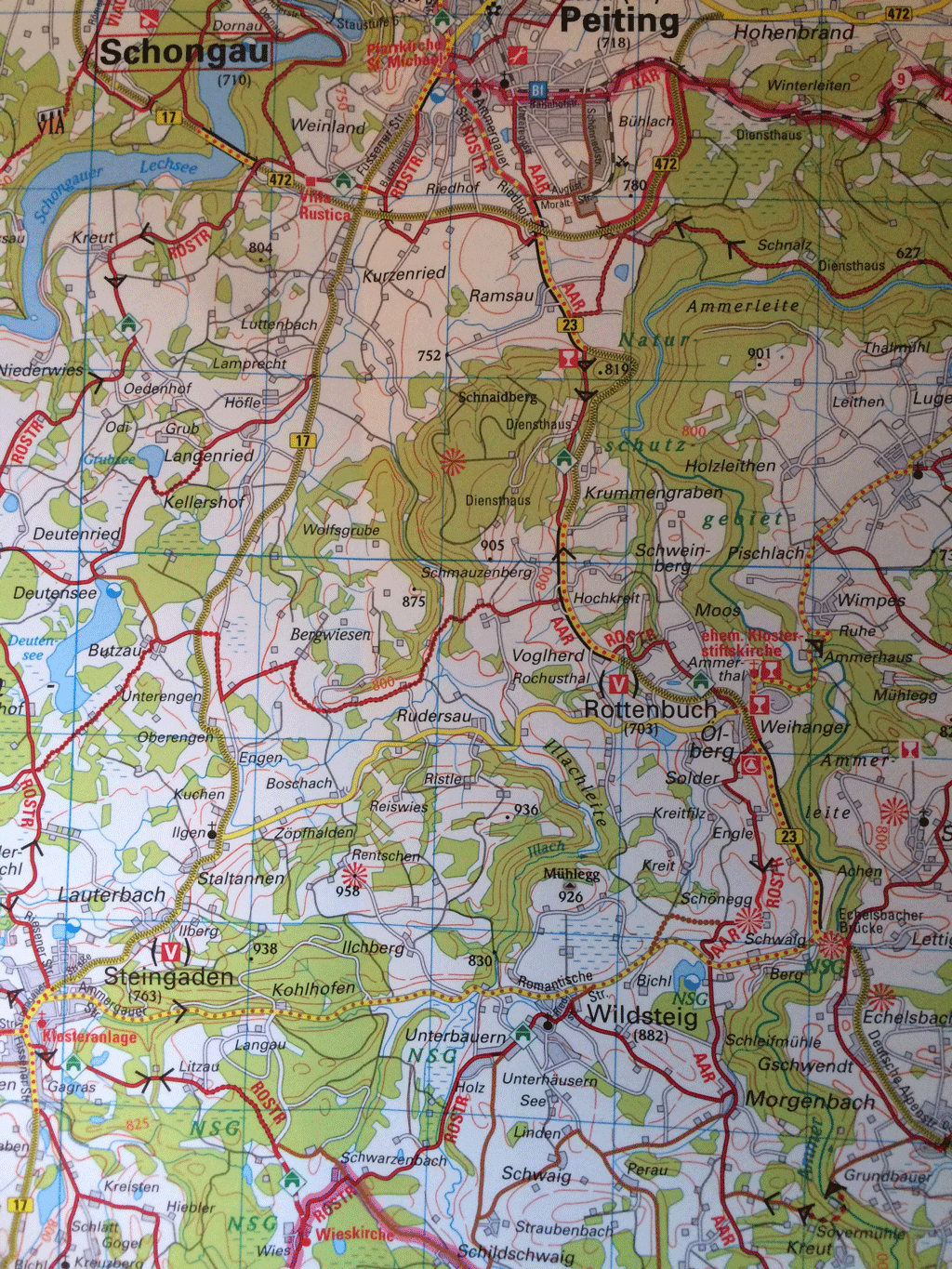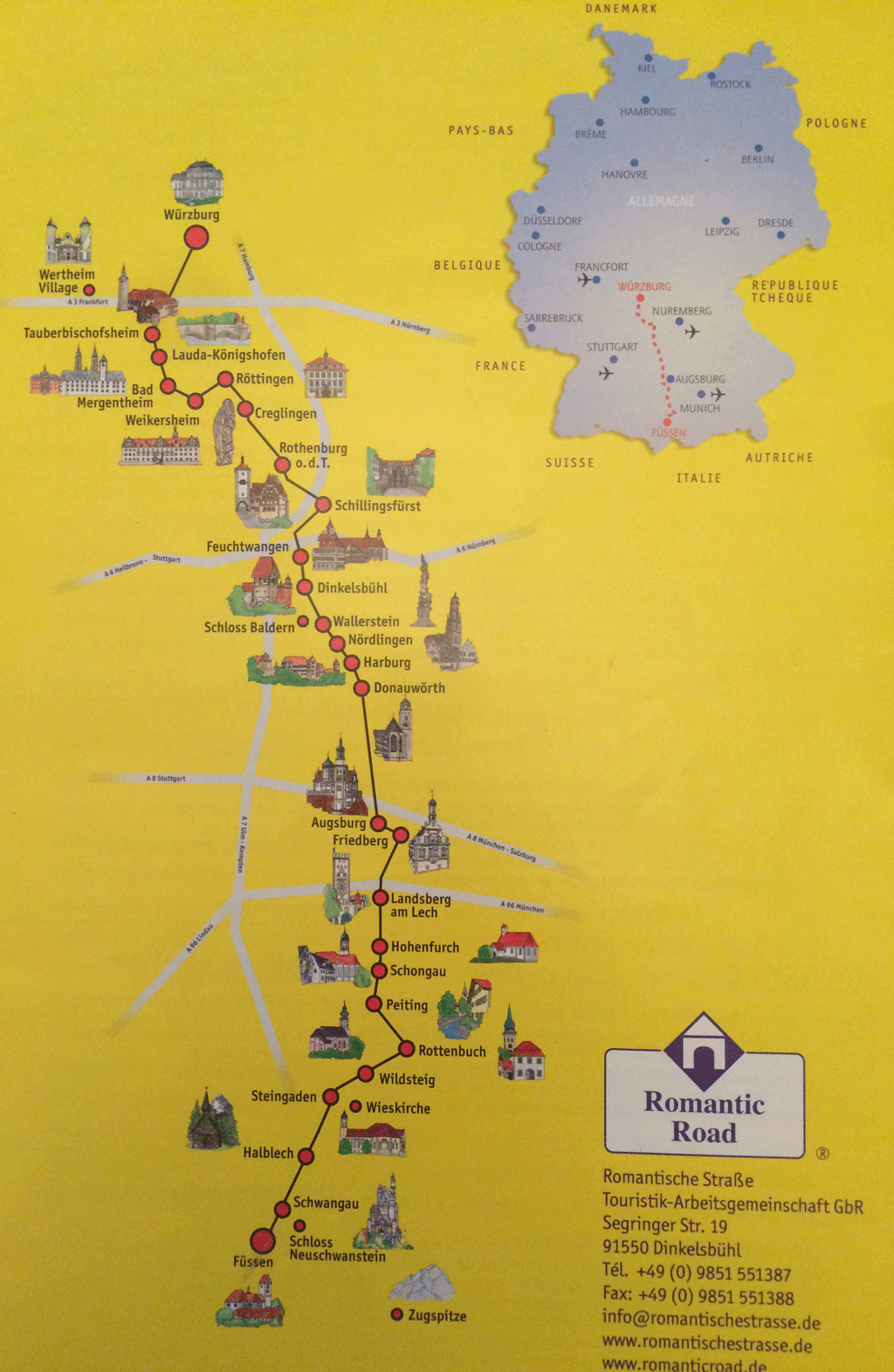With our new Bikeline maps, we are ready to start our cycling trip along the 350-kilometer Romantic Road which starts in Fussen in the south of Bavaria and ends in Würzburg in the central Germany. Although it more or less follows the old Roman road of Via Claudia Augusta, it was really only invented in 1950 to stimulate the local economy after World War II. The trail, with its many baroque churches and castles became very popular with the families of Americans who had been stationed in Germany.
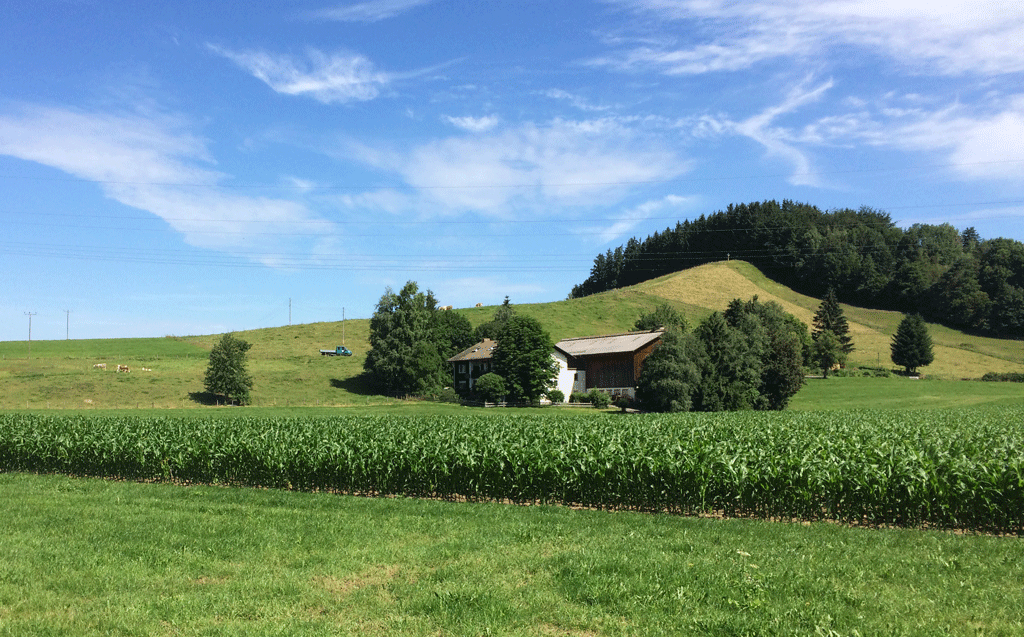
As soon as we are out in the countryside, we are delighted. The scenery is just as beautiful as I remember from our short visit in 1999: mountains of various heights in the background, rolling green hills in the foreground and an occasional house or tractor. The locals are bringing in the hay at the moment so it’s quite busy. Our itinerary is along small roads and is extremely well sign-posted. We won’t be getting lost today, unlike our recent experience in Italy.
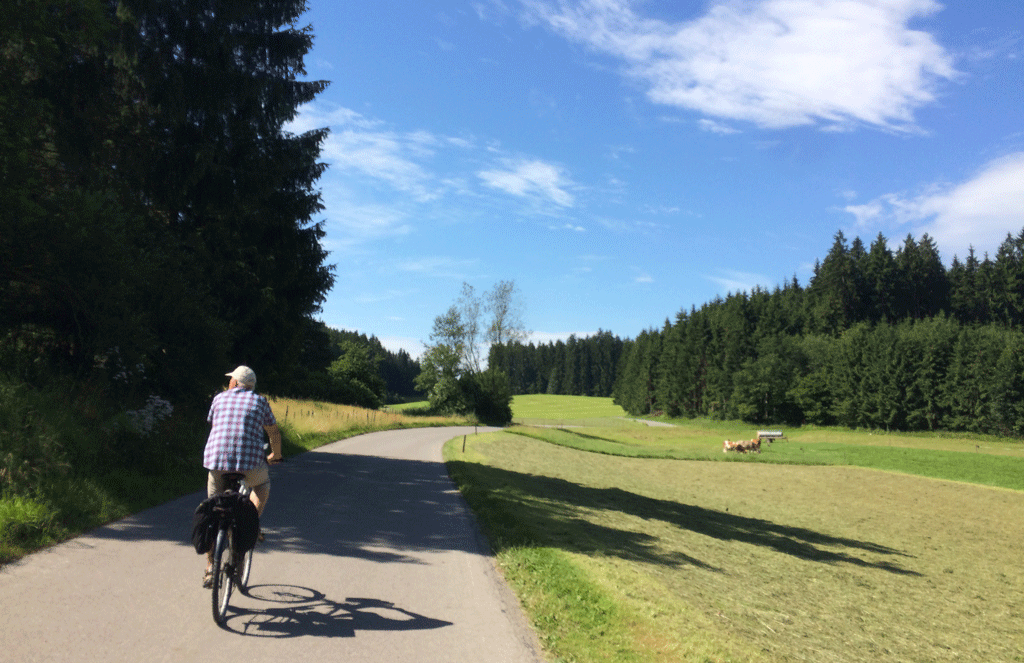
The only disadvantage is the number of hills (and the occasional march fly). Jean Michel had forgotten the hills, but I hadn’t. However we mustn’t complain. We prefer hilly roads in Bavaria where everything is a delight to the eye to the flat plains around the Po River!
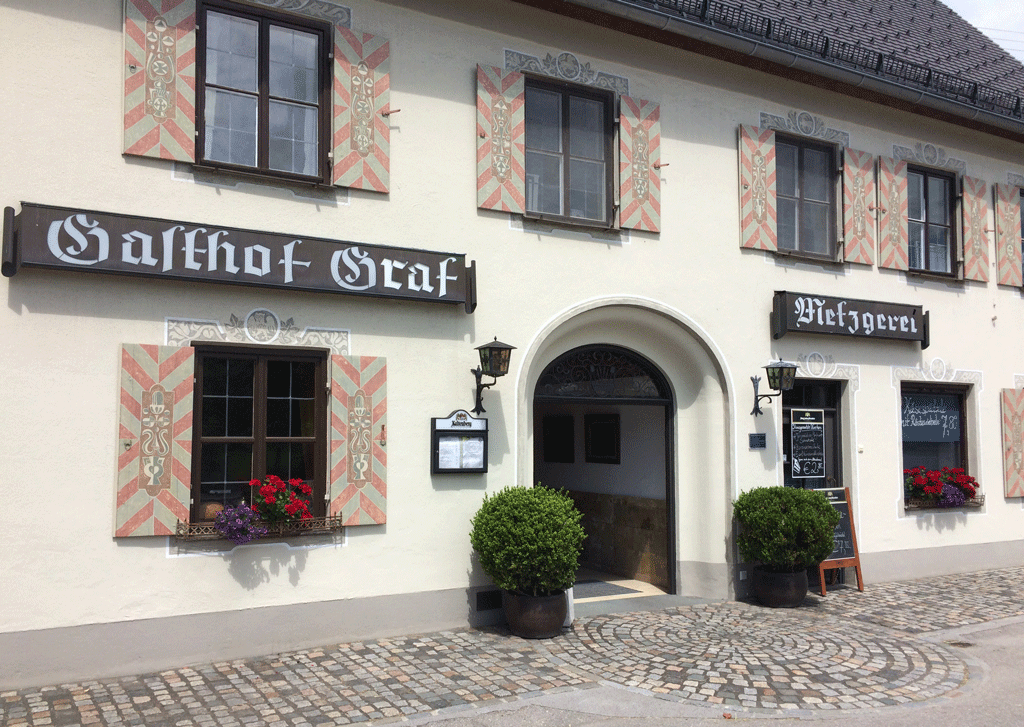
Our first stop is Gasthof Graaf in Steingaden. It’s nearly midday which is lunch time for most people in Germany. When we ask for a cappuccino, the waiter suggests “home made strawberry cake” to go with it! As I don’t really like strawberries, I decline so he suggests red currant cake instead. What can I say? Before we leave, the chef comes out and asks in very basic English if we are French. Since France has just beaten Germany in the European Soccer Cup semi-finals, we immediately apologize.
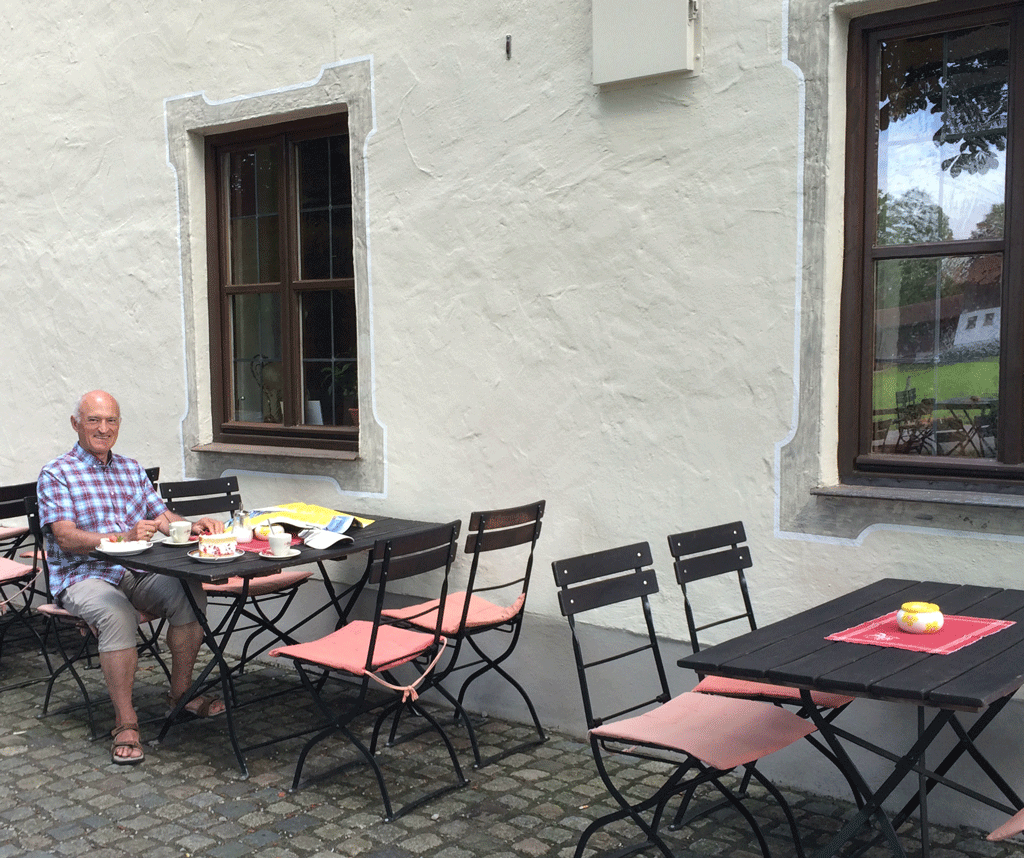
“No, no,” he says, “you don’t have to worry. It was a good game. Fair play is more important than anything else.” Then he and the waiter say they hope France will beat Portugal in the finals on Sunday.
Andrea, our very helpful contact at the tourist office in Peiting phones to say she’s found us an apartment in the village of Wildsteig that has V-lan. It sounds good so I tell her to book for us.

We then visit the 12th century abbey of Steingaden with its beautiful baroque ceiling paintings and rococo puttis
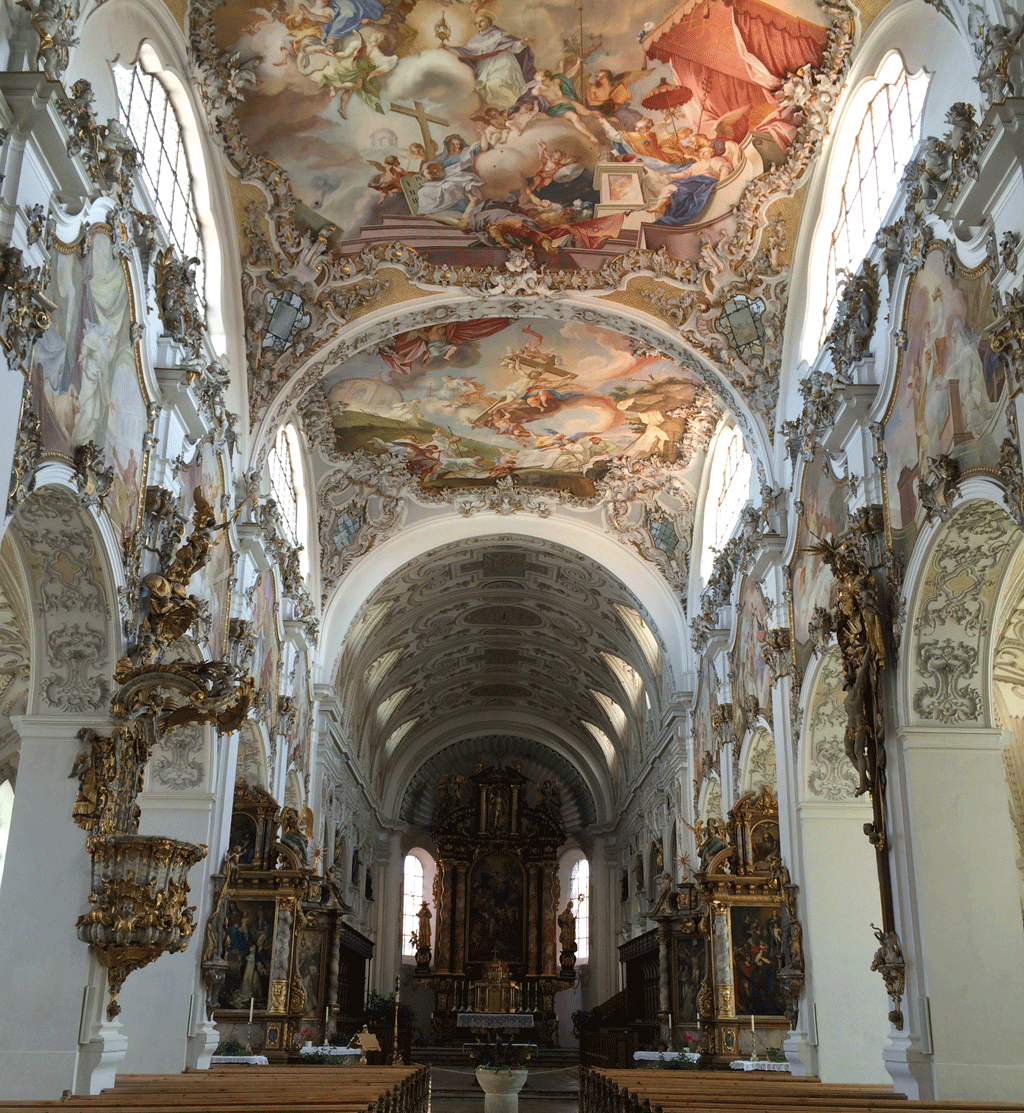
The next stop is the stunning rococo church of Wies which I wrote about a couple of days ago but which we approach from a different side. this time We park our bikes next to the sundial (it’s actually 1.15 and not 12.15) and follow the other pilgrims into the church.
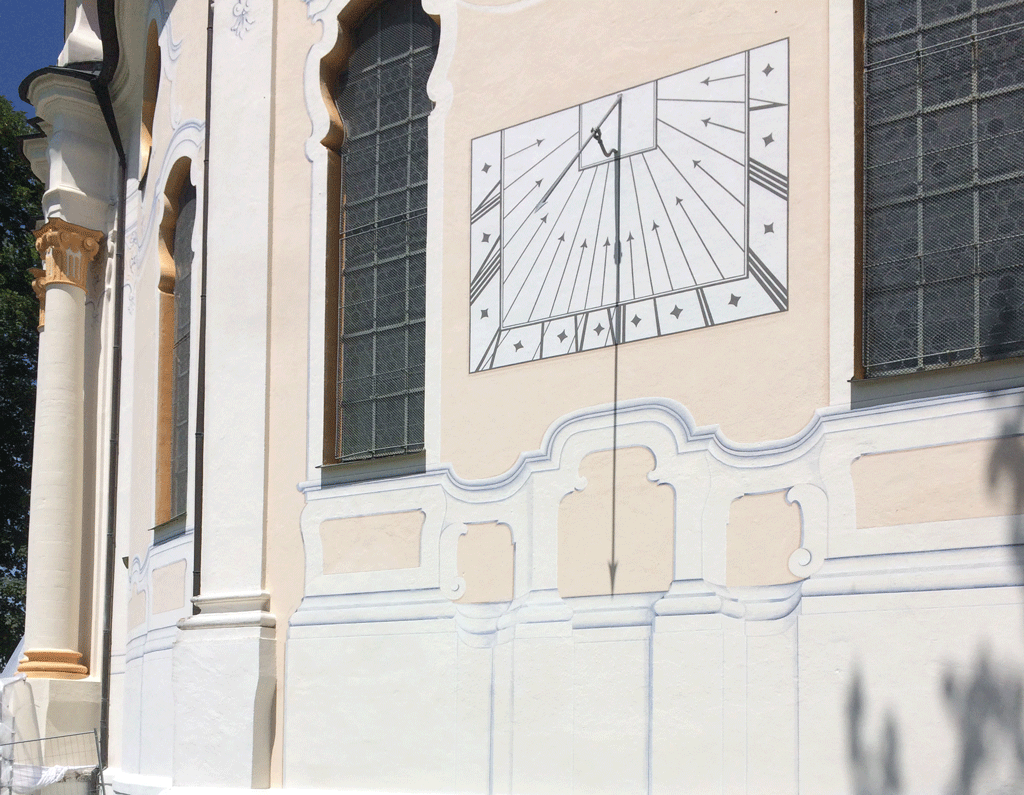
It obviously does not have the same surprise effect as it did the first time, but we still love it! Designed in the late 1740s, the pilgrimage church of Wies is one of the finest examples of German rococo and understandably on the Unesco World Heritage list.
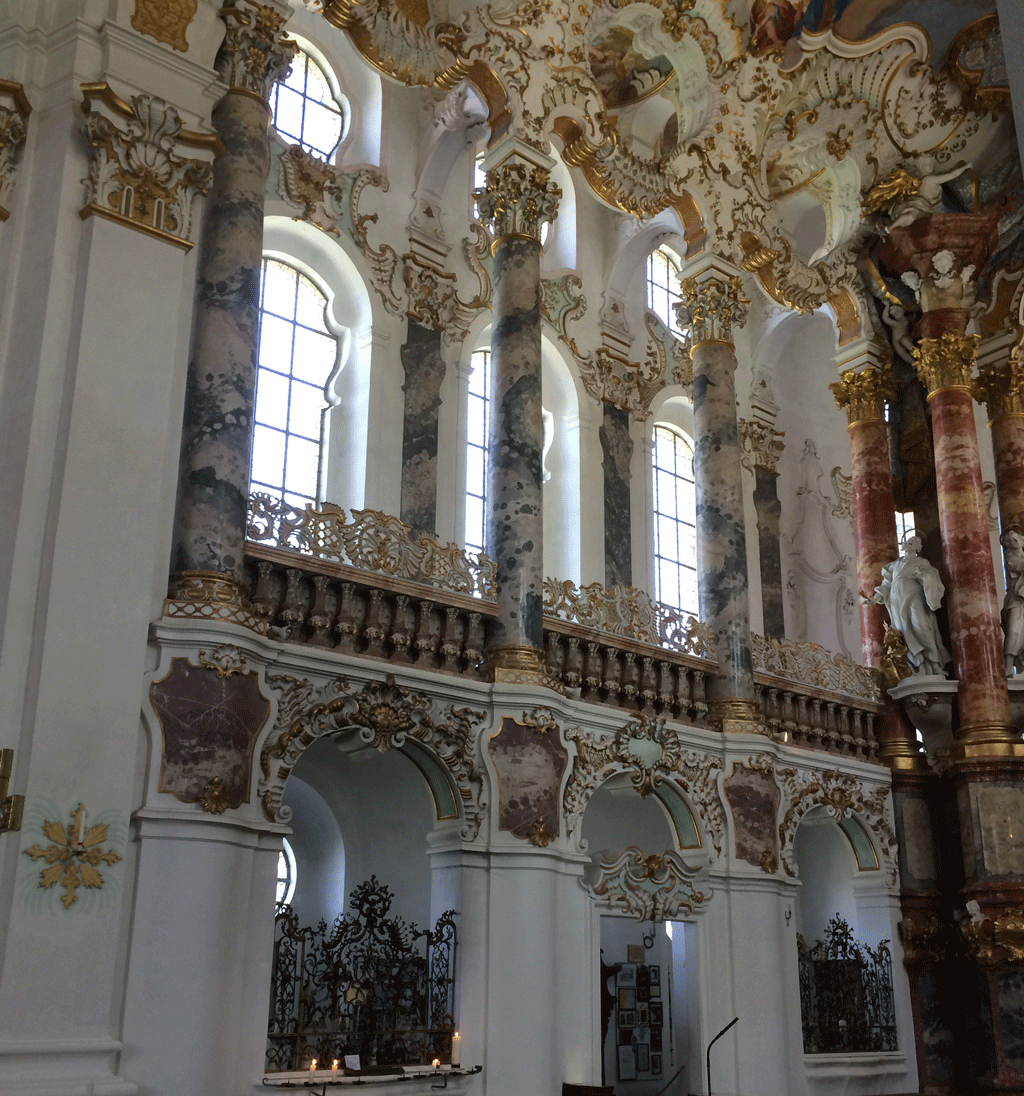
It is said that tears were seen in 1738 on a dilapidated wooden sculpture of the Scourged Saviour. Pilgrims flocked to the site as a result and a small chapel was soon built to house the statue. However, it was not big enough to accommodate the crowds so Steingaden Abbey commissioned a separate site and chose Dominikus Zimmermann as the architect.
Just as we are about to leave, we hear music. A man is playing the harmonica and the result is very moving in this grandiose setting.

Before we leave the site, we walk down the hill a little way so we can relive our first view of the outside of the church in 1999.
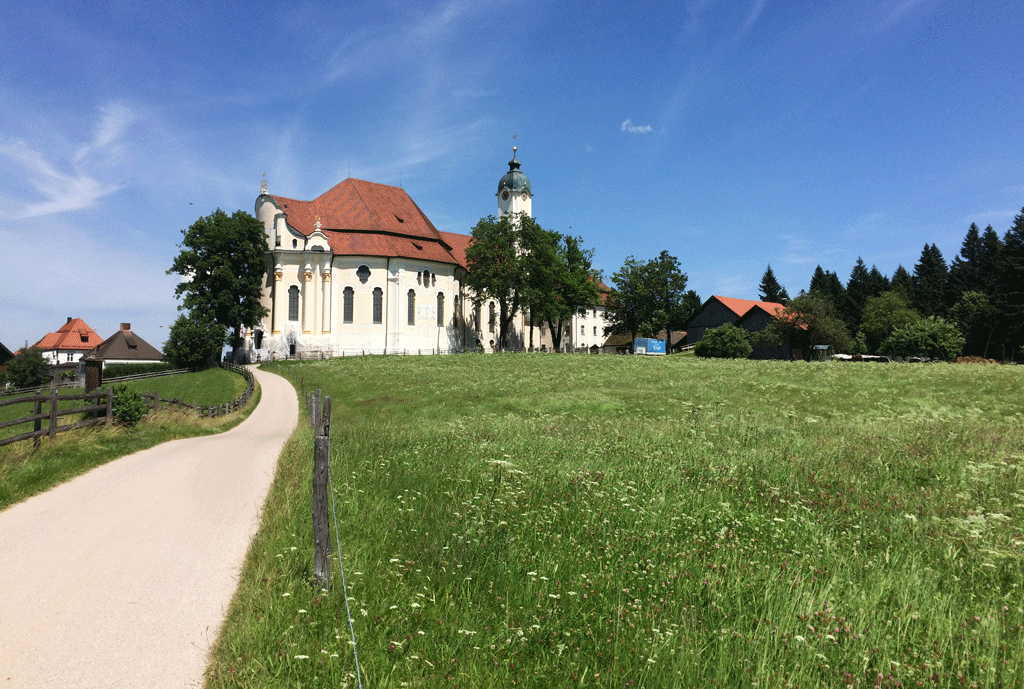
We’re starting to get hungry despite the cake (it’s nearly 2 pm) but don’t want to eat in any of the restaurants immediately surrounding Wies. The next village is Wildsteig which is at the top of a steep hill. The only place we can find is Café Peramarta where we order a large salad each.
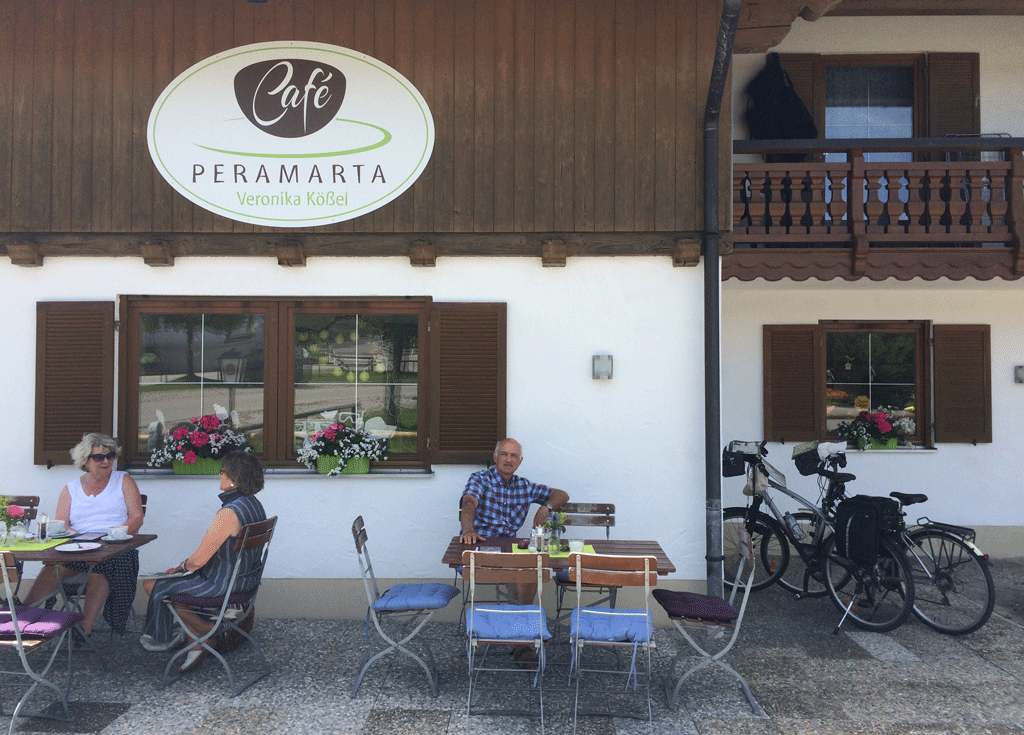
While we are there we check out the apartment that Andrea has found us but we do not find either the village or the environment of the apartment very appealing so we decide to simply extend our hotel stay in Peiting for two more nights. It is perfectly located and we appreciate the room and balcony. I send an email to the owner when we get back to the hotel explaining that we have had to leave the area.
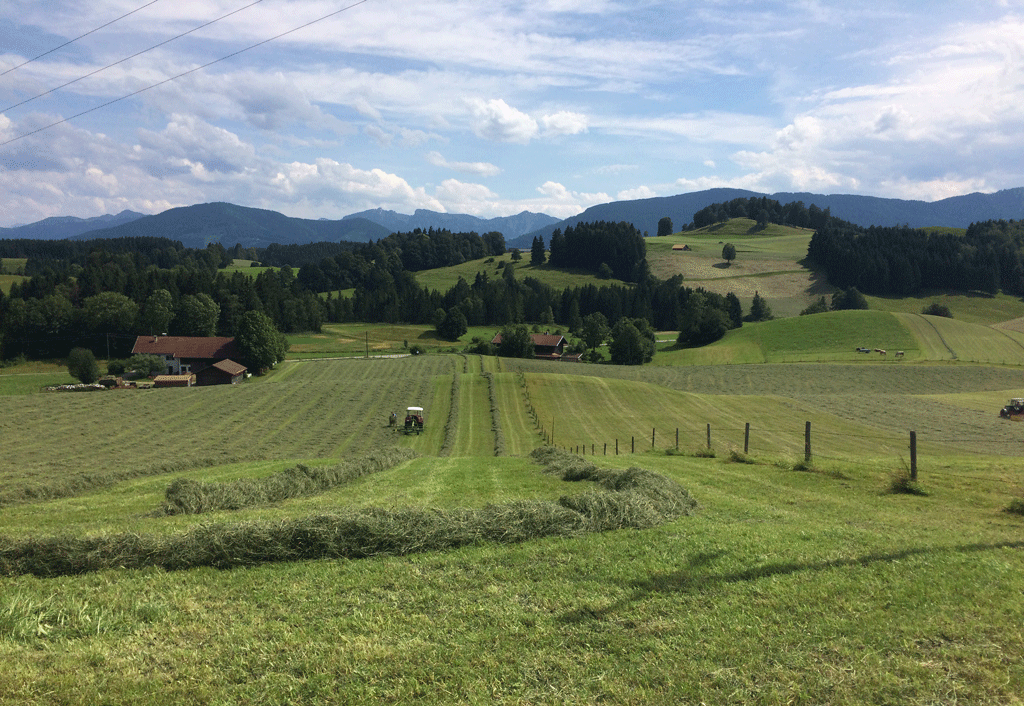
More beautiful scenery takes us down past the Kase-Alm cheese factory that Andrea has told us about. It is obviously very touristy but we appreciate the view and buy some cheese.
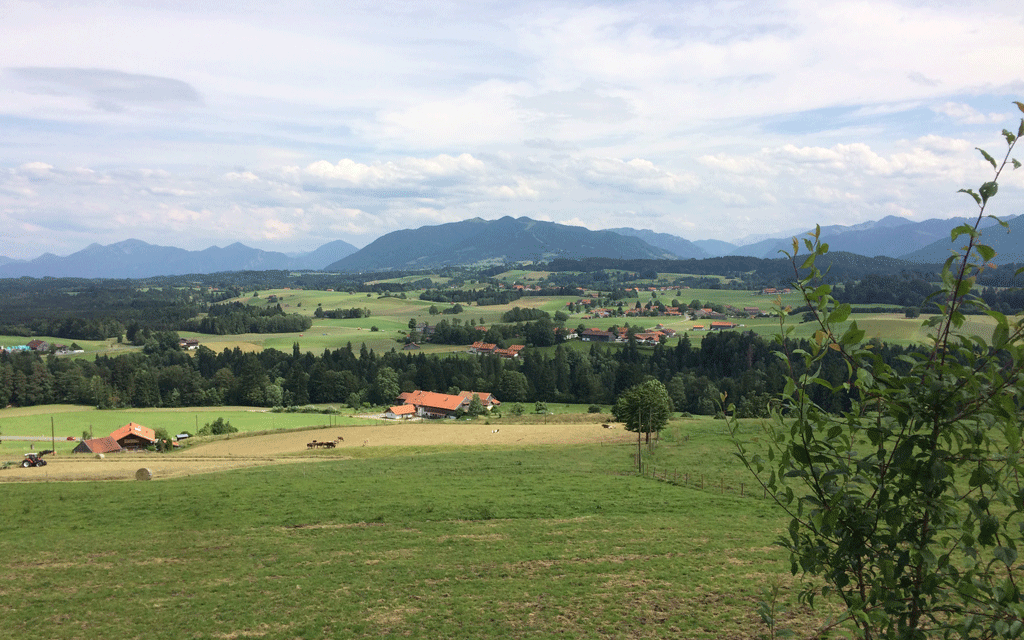
Rottenbuch with its typical maypole is next.
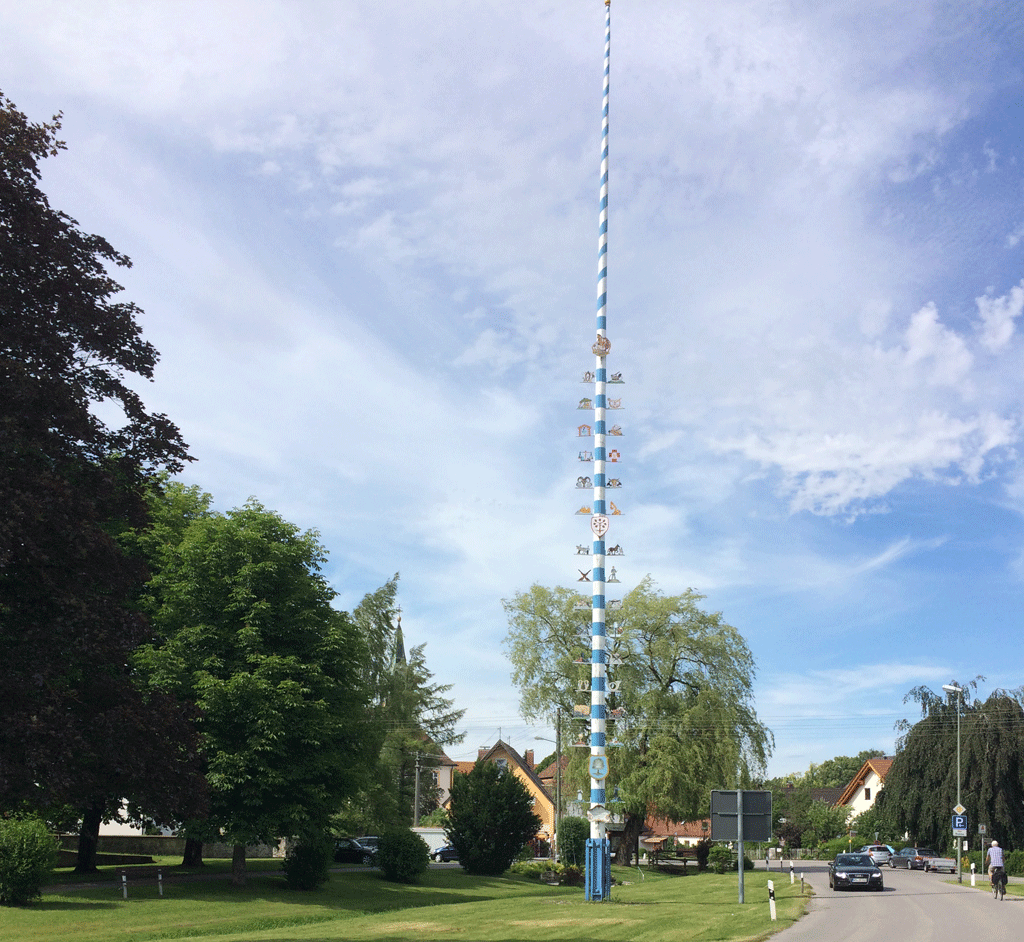
It, too, has a high baroque abbey church, called Mariae Geburt, on a smaller scale than Wies, but still very lovely. There is a priest training two giggly altar girls.
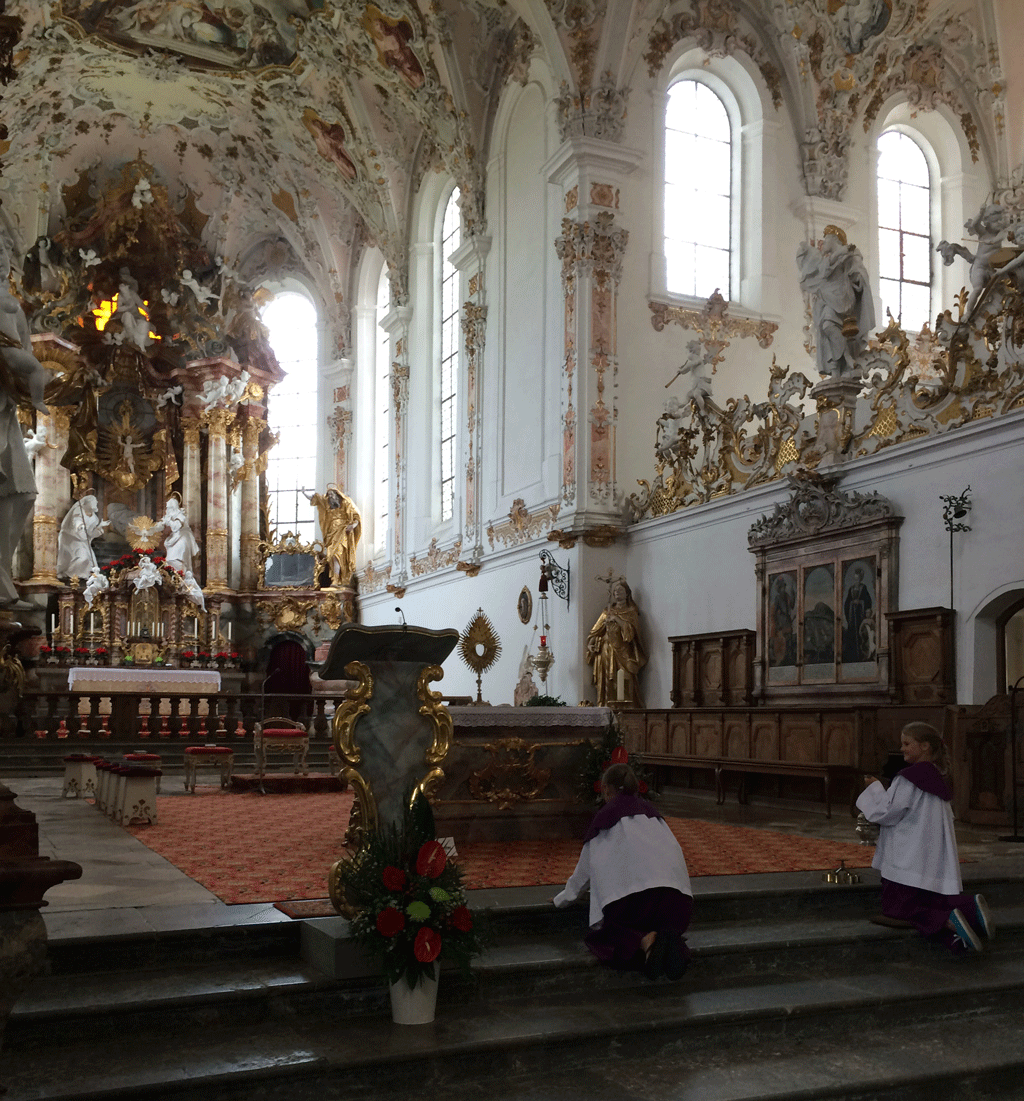
After 44 km and 5 hours of hills and dales we arrive back in Peiting, very satisfied with our return to the mythical Wies after 17 years. Despite our wobbly knees, we can still make it to the Eiscafé!
